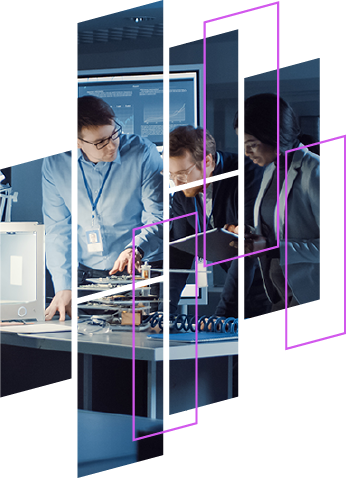The HPC Revolution - Where Does the Line Between Innovation and Maturity Lie?
We are witnessing a true revolution in Artificial Intelligence (AI) and High-Performance Computing (HPC). Sometimes, it seems as if the rate of change is accelerating almost too fast. While innovation brings positive developments, it can also lead to unnecessary upgrades and products not mature enough for the market – especially against increasing competition among tech giants vying for technological leadership.
The Server and Processor Revolution
The domain of processors and servers is a classic example of the constant change in the tech market. In the past, Intel and AMD processors used to evolve at a defined pace. Every 18 months, significant changes were announced, followed by more minor updates 18 months later. Technology companies developing software or OEMs creating complex computer-based products used to time their technological shifts in three-year cycles according to these schedules. Today, things are entirely different. Timelines have shortened to less than two years, and sometimes even less. Products are rapidly released to the market to “close the gap with the competition,” sometimes at the expense of full maturity. For instance, we remember Intel’s “temporary” products, such as IceLake, which were introduced to bridge a gap for a year and a half until the next more mature generations were released.
The Importance of Long-Term Planning
While technology is advancing at a furious pace, the ability to plan for the future and make informed decisions is crucial for OEM companies, for whom hardware is an integral part of their product. We place significant emphasis on long-term planning, enabling us to guide clients towards products that meet their needs and have a lifespan of at least five to seven years. In a world where technology changes at lightning speed, creating stability and long-lasting products is a major challenge, but it is indeed possible.
An OEM product is typically susceptible to changes and updates in hardware components. These changes may have unforeseen impacts and even create compatibility issues with the dedicated software running on it. For instance, when hardware is replaced, it often necessitates replacing the operating system as well, which alone can take several months.
It’s important to note that software companies typically lack the resources and capability to test and approve a replacement product every year. Therefore, products with a longer lifespan provide an optimal solution for the developing company, offering peace of mind for many years. Such logistical peace of mind is a significant advantage, especially for an industrial client looking to get to market. It eliminates the need to re-evaluate and approve a new computer for an existing machine every 18 months to two years.
Smart Timing as Part of Strategy
When a tech company wants to upgrade its product, it is essential to consult in advance with HPC and industrial computing experts who can advise on when the new product will be released and whether it is worth waiting for the next generation. This ability is available only to companies with strategic partnerships with leading global hardware technology manufacturers, providing access to a broad portfolio of solutions, including future product roadmaps. This allows for flexibility in tailoring a focused solution for the client without dependence on any particular manufacturer and provides a long-term, informed perspective.
Sometimes, waiting for one or two generations ahead can save valuable resources and provide a competitive advantage. For example, a media client in the UK wanted to make a technological shift in their product. After thorough consideration, I advised them to wait another two months for a more advanced product – the fifth generation of AMD’s EPYC Turin series – thereby avoiding unnecessary time and resource investment. On the other hand, a client in the digital printing industry could upgrade the computing for their printing machines only once every six years. In doing so, they effectively skipped over two generations of computing, giving them peace of mind for many years and saving considerable resources.
It’s important to remember that not every upgrade is beneficial. Sometimes, a new upgrade changes the entire product paradigm. Therefore, a minor upgrade that improves the product without drastically altering it can often be a better approach.
Market Shifts
Unsurprisingly, the needs of customers across different industries are also diverse. Some prefer stability, while others seek frequent upgrades. In these cases, designing flexible HPC systems that allow for future upgrades without disrupting ongoing operations is essential. For example, clients developing medical devices or complex systems for the defense sector often seek products with a longer lifespan to avoid the need for hardware updates every year. It is crucial to remember that development processes in these sectors usually take a long time and require specific certifications (MIL-STD, CE, FDA). As a result, they are tied to significant financial and time resources. Therefore, the chosen components must allow for configuration stability over a more extended period and consistent product supply, sometimes for many years.
Young start-ups are an excellent example of this, as many quickly adopt the latest technology and choose products that may not always suit their needs. We often see cases where they purchase simple home computers instead of industrial-grade, stable machines that can ensure high performance and stability over time. This phenomenon usually stems from a lack of knowledge and deep understanding of industrial computing, leading them to make decisions not aligned with their unique needs. Thus, the recommendation is to consult with computing experts early in development to ensure optimal performance and long-term solutions.
In Conclusion
In a world of rapidly advancing technology, strategic decisions based on a broad, long-term perspective are critical. The combination of innovation and stability will enable OEM companies to continue succeeding in a competitive market without compromising on the quality and maturity of their products.

